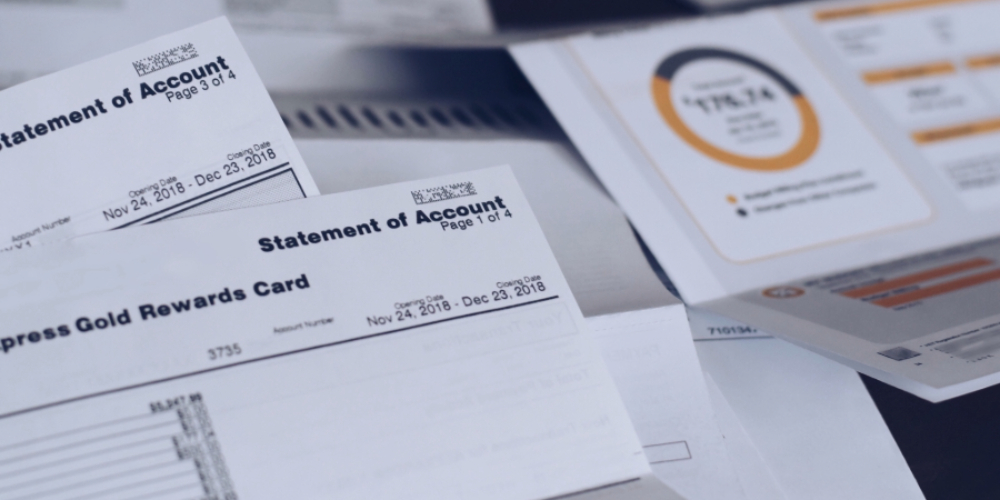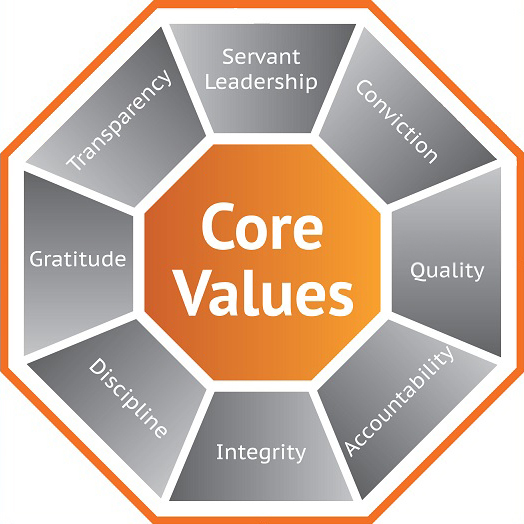Planning for retirement is like mapping out a cross-country journey. You need to decide which vehicles will get you to your destination most efficiently. Should you travel in a tax-advantaged retirement account like an IRA or 401(k), or should you take the regular brokerage account route? For many travelers on the financial highway, the answer might be both – each type of account could offer unique benefits and follows different rules for the journey ahead.
Tax Advantages of Traditional and Roth Retirement Accounts
Retirement accounts come with valuable tax benefits intended to encourage you to save for the future. Let’s break down the two main types of retirement accounts and their tax advantages:
Traditional 401(k) and IRA (Tax-Deferred Accounts)
When you contribute to a traditional 401(k) or IRA, you typically get a tax deduction for that contribution in the current year (if you meet certain qualifications). This means you don’t pay income tax on that money now, which can save you money immediately. The money then grows in your account without any taxes each year – this is called tax-deferred growth.
You will pay taxes only when you withdraw the money in retirement, and those withdrawals are taxed as ordinary income. The benefit is that more of your money stays invested over the years instead of being shaved off by taxes annually. This can lead to a larger balance over time. In fact, because no taxes are taken out along the way, more of your money works for you, compounding over time. The hope is that when you do withdraw in retirement, you might be in a lower tax bracket (for example, if your retirement income is less than your working income).

Roth IRA and Roth 401(k) (Tax-Free Accounts)
With Roth accounts, you don’t get a tax break upfront. You contribute after-tax dollars, meaning there’s no immediate tax deduction. However, the trade-off is huge: your investments grow completely tax-free, and qualified withdrawals in retirement are 100% tax-free. In other words, you pay the taxes now so that you don’t have to pay any taxes on that money (or its growth) later.
This is especially powerful if you expect to be in a similar or higher tax bracket when you retire or if you just want tax certainty – you won’t owe anything on withdrawals. Roth IRAs also have the perk that you can withdraw your contributions (the money you put in, not the earnings) at any time without tax or penalty since you’ve already paid tax on those dollars. This makes Roth IRAs a bit more flexible in emergencies than traditional accounts (though it’s best to leave them for retirement if possible).
Both types of retirement accounts reduce your lifetime tax bill, just in different ways. Traditional accounts give you tax savings now; Roth accounts give you tax savings later. Many financial advisors actually recommend using a mix of both if you can. This strategy is sometimes called tax diversification, which means not putting all your eggs in one basket when it comes to tax treatment.
By having some money that will be taxed later and some that won’t be taxed in retirement, you can hedge against uncertainty in future tax rates. The idea is to balance the benefit of tax deferral today with the benefit of tax-free income in the future.
Understanding Your Account Options
| Traditional IRA/401(k): Contribute pre-tax (lowers your taxable income now), tax-deferred growth, pay income tax on withdrawals in retirement investopedia.com |
| Roth IRA/401(k): Contribute after-tax (no upfront tax break), tax-free growth, no income tax on qualifying withdrawals later investopedia.com |
| Brokerage Account: Contribute after-tax, taxable growth (taxed on dividends/interest yearly and on gains when realized), but no restrictions on withdrawals investopedia.com |
| (Tax-deferred = tax is delayed; Tax-free (tax-exempt) = no tax on withdrawals because you paid upfront.) |
Taxable Brokerage Accounts
Brokerage accounts don’t give you upfront tax breaks or tax-free withdrawals, but they still play a key role in a well-rounded financial plan. The money in a brokerage account is after-tax, and any earnings are generally taxable. Here’s how taxes typically work in a brokerage account:
Dividends and Interest
If your investments pay dividends or interest, those are usually taxed each year. For example, stock dividends or bond interest in a taxable account will usually be reported as income to you for that year. Most dividends and interest income earned from taxable investments are taxed annually.
Qualified stock dividends get taxed at the lower long-term capital gains rates, while interest (and non-qualified dividends) are taxed at ordinary income rates. The key point is that you may owe some tax each year on a brokerage account if it generates income.
Capital Gains
When you sell an investment for more than you paid (a gain), you owe capital gains tax. If you held the investment for more than one year, it’s a long-term capital gain and taxed at a favorable rate (often 0%, 15%, or 20%, depending on your tax bracket). If you held it for one year or less, it’s a short-term gain taxed at your higher ordinary income rate. If you sell at a loss, you can use losses to offset some gains for tax purposes. In a brokerage account, you’re in control of when you realize gains or losses by choosing when to sell.
So, brokerage accounts are fully taxable, but that doesn’t mean they’re bad. In fact, you can invest in a very tax-efficient way inside a brokerage account. A few strategies to improve tax efficiency in taxable accounts are investing in tax-efficient assets like ETFs, and mutual funds, buying and holding to defer capital gains, and offsetting gains with losses (tax-loss harvesting) to reduce taxable income.
ETFs tend to be the most tax-efficient because they realize fewer gains inside the fund. Another strategy is to place investments that lose less to taxes in taxable accounts and those that would lose more to taxes (like bonds or high-turnover funds) in tax-advantaged accounts. This concept is called asset location – putting the right investments in the right type of account to optimize taxes.
Brokerage Account Benefit – Flexibility
We mentioned it earlier, but it’s worth highlighting: one big advantage of a regular brokerage account is that you can withdraw money whenever you want, for any purpose. There are no age restrictions or penalties. If you need money at 45 for a home down payment or at 35 for a business opportunity, funds in a brokerage account are readily available (after selling the investments). You’ll pay taxes on any gains when you sell, but there’s no extra 10% penalty like there would be for an early IRA withdrawal.

The Power of Diversifying Across Account Types
Given the pros and cons of each account type, an optimal approach for many people is to use a combination of tax-deferred, tax-free, and taxable accounts. By diversifying where you save (not just how you invest), you set yourself up for more flexibility and potential tax savings later on. G&R Financial Solutions often advises clients to consider this kind of “tax diversification” strategy.
Why use different account types? Because different accounts have different rules and tax impacts, and that creates planning opportunities. In retirement, you can essentially “mix and match” income sources to manage your tax bill. If all your savings are in one type of account, you lose that flexibility. Here are some benefits of spreading your savings across multiple account types:
Control Over Taxable Income in Retirement
When you retire, each source of withdrawal can have a different tax consequence. For example, money taken from a traditional 401(k) will count as taxable income. Withdrawals from a Roth IRA do not count as taxable income. Withdrawals from a brokerage account might trigger capital gains income (which is taxed separately, often at lower rates). By having all three, you can choose which bucket to pull from each year to optimize your taxes. If you have a year with higher expenses, you could use more from your Roth (tax-free) to avoid jumping into a higher tax bracket rather than taking it all from the 401(k) , which would increase your taxable income.
Conversely, if you are in a low tax bracket in a given year, you might take extra from the traditional IRA/401k (tax-deferred bucket) up to the top of that low bracket and use less from Roth. This way, you manage your taxable income to stay within a favorable range.
Control Your Retirement Tax Bill
See how different withdrawal strategies from your retirement accounts could potentially impact your tax situation. Drag the sliders to customize your retirement income needs.
Your Annual Retirement Income Need
Strategy A: All from One Source
Taking all withdrawals from tax-deferred accounts
Tax Impact
Strategy B: Strategic Mix
Strategically balancing withdrawals from different accounts
Tax Impact
Potential Tax Savings
Through strategic account withdrawals
How Account Mixing Might Lower Your Tax Bill
Fill Lower Tax Brackets
Use tax-deferred withdrawals to "fill up" lower tax brackets, potentially maximizing the amount of money taxed at lower rates.
Tax-Free Growth
Roth withdrawals add to your cash flow without increasing your taxable income, helping you stay in lower tax brackets.
Capital Gains Advantage
Brokerage withdrawals may be partially taxed at lower capital gains rates, potentially reducing your overall tax burden.
* This visualization uses 2025 tax brackets for a single filer for illustrative purposes only. Tax calculations are simplified and do not account for deductions, credits, state taxes, or other factors that may impact your actual tax situation. Capital gains taxes are estimated at 15% on 50% of brokerage withdrawals. This does not constitute tax or investment advice. Please consult with qualified tax and financial professionals regarding your specific situation.
Withdrawal Flexibility and Emergency Access
By diversifying account types, you also diversify the accessibility of your money. We touched on this, but to recap: Taxable brokerage money is accessible anytime for any need (just mind taxes on gains). Roth IRAs allow the withdrawal of contributions at any time without penalty, which can serve as an emergency fund of last resort. Roth IRAs also have no forced withdrawals in retirement, so you can leave them untouched if you don’t need the money (and even pass them to heirs tax-free).
Traditional retirement accounts do force you to take RMDs later in life, but ideally, you’ve used some of that money by then, or you plan around it. If you retire before 59½, having taxable (or Roth contributions) covers those early years. If you live a long life and want to minimize taxable RMDs, you can lean on Roth or taxable funds for a while and let the traditional account grow until the RMD age. In essence, a mix of accounts gives you options at every stage.
Think of it like having three different faucets (Tax-Deferred, Tax-Free, and Taxable) to draw from in retirement. You can turn each faucet on or off as needed to control the “temperature” of your tax situation. As one financial planner put it, having multiple account types for retirement is like having multiple levers you can pull to stay tax-efficient no matter what happens with future tax laws or your income needs. And if done right, this can potentially reduce the total taxes you pay over your lifetime while ensuring you have the money you need–when you need it.
Withdrawal Flexibility & Emergency Access
Different retirement accounts offer varying levels of access and tax treatment. Think of them as faucets you can turn on or off based on your needs at different life stages.
Tax-Deferred
(Traditional 401(k), IRA)
- Contributions may reduce current taxes
- 10% early withdrawal penalty before 59½*
- Required Minimum Distributions (RMDs) eventually
- All withdrawals could be taxed as income
Tax-Free
(Roth IRA, Roth 401(k))
- Contributions can be withdrawn anytime
- Earnings withdrawable after 5 years & age 59½*
- No Required Minimum Distributions (for Roth IRAs)
- Qualified withdrawals are tax-free
Taxable
(Brokerage Accounts)
- Access funds anytime without age restrictions
- No contribution limits
- Pay capital gains taxes only when you sell
- No mandatory withdrawals
See how different accounts might work in various scenarios:
Click a scenario above to see which account types might be most appropriate.
* Exceptions may apply. This visualization is for educational purposes only and does not constitute investment advice. Tax laws could change, and individual circumstances vary. Please consult with a qualified financial professional before making decisions.
Ready to Optimize Your Retirement Strategy?
Choosing the right mix of retirement and brokerage accounts can feel complex, but you don’t have to figure it out alone. At G&R Financial Solutions, we specialize in helping you craft a balanced, tax-efficient retirement plan that fits your life. Our team will walk you through questions like: How much should you contribute to your 401(k) or IRA? Should you consider a Roth conversion? What investment choices make sense in taxable vs. tax-advantaged accounts? The decisions you make now can pay off in a big way when you retire – and we’re here to guide you every step of the way.
Schedule a consultation today to let us help you optimize your retirement strategy.
We’ll help you create a plan so you can enjoy retirement with confidence, knowing you’ve made the most of the tax-smart opportunities available.
Sources:

